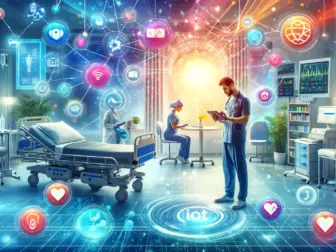Tag - remote monitoring
Maximizing Efficiency with State-of-the-Art Remote Monitoring Technologies
Maximizing Efficiency with State-of-the-Art Remote Monitoring Technologies
In today’s fast-paced world, the ability to monitor operations, assets, and systems remotely is not just convenient but often essential. The advent of state-of-the-art remote monitoring technologies has revolutionized various industries, enabling businesses to streamline their operations, reduce costs, and enhance their overall efficiency. Remote monitoring refers to the use of sensors, cameras, and other devices to gather data from equipment and environments without requiring physical presence.
One of the key advantages of remote monitoring is the ability to track the performance and condition of equipment in real-time. This real-time data acquisition allows for the immediate detection of any irregularities or faults, which can be addressed before they escalate into major issues. By identifying potential problems early, companies can avoid costly downtimes and extend the lifespan of their equipment. This proactive approach to maintenance is often referred to as predictive maintenance, and it stands in stark contrast to the traditional reactive methods that only address problems after they occur.
Another significant benefit of remote monitoring technology is the optimization of resource allocation. With detailed insights into system performance and usage patterns, businesses can make informed decisions on where to allocate their resources for maximum productivity. This can result in more efficient energy use, better scheduling of maintenance staff, and optimized supply chain operations. Moreover, remote monitoring enables the collection of vast amounts of data over time, which can be analyzed to identify trends and improve future planning.
Remote monitoring also plays a crucial role in enhancing the safety and security of operations. In environments where hazards are present, such as chemical plants or construction sites, remote sensing technology can keep human workers out of harm’s way while still providing the necessary oversight and data collection. For security purposes, remote cameras and sensors can surveil large areas, detect unauthorized access, and alert authorities to potential breaches without the need for constant human vigilance.
The implementation of remote monitoring technologies is made possible through advancements in connectivity, particularly the growth of the Internet of Things (IoT). IoT devices can communicate with each other and with central monitoring systems via the internet, allowing for seamless integration and data exchange. The use of cloud-based platforms further enhances the capability of remote monitoring systems by providing scalable storage solutions and powerful analytic tools to process the data collected.
However, the shift to remote monitoring also presents challenges that must be addressed. Cybersecurity is a paramount concern, as increased connectivity can open up new avenues for cyberattacks. Companies need to invest in robust security measures to protect their monitoring systems and the sensitive data they handle. Additionally, there might be a learning curve associated with the adoption of new technologies, requiring adequate training for employees to ensure they can effectively manage and utilize these systems.
In conclusion, the implementation of remote monitoring technologies offers a world of possibilities for businesses looking to enhance their efficiency and maintain a competitive edge. By enabling real-time data collection, facilitating predictive maintenance, optimizing resource allocation, and improving safety and security, remote monitoring systems are transforming how industries operate. As technology continues to advance, it is clear that the role of remote monitoring will only become more integral to the success of businesses in this connected age.
